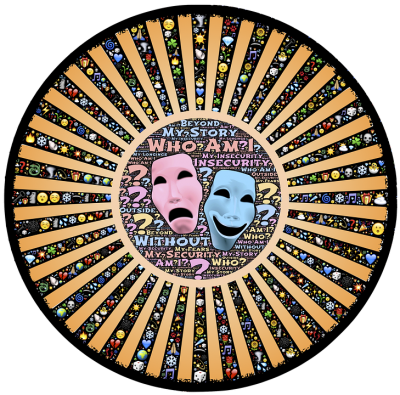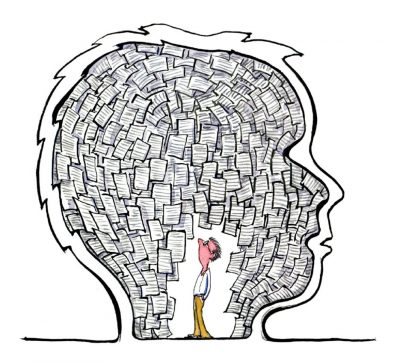THIS POST INCLUDES:
1. Psychological Approaches
2. Art Therapy Counselling Approaches
3. Which counselling approach to use?
4. Useful links to learn more
5. Free Download Client Session Plan
PSYCHOLOGICAL APPROACHES
Art Therapy was established from a variety of domains including the most common areas of art and psychology. From a psychology perspective, art therapy has evolved using a number of theoretical perspectives. Some of these approaches were covered in our recent book review of Judith Rubins book: Introduction to Art Therapy: Sources & Resources.
A summary of these approaches is included below:
PSYCHODYNAMIC APPROACHES

- Freudian Psychoanalysis – emphasis on insight, sublimation and defence mechanisms
- Jungian Analytic Therapy – emphasis on symbolism and imagery, archetypes
HUMANISTIC APPROACHES

- Person-Centered Approach – emphasis on the powerful effect of empathy and positive regard for the client
- Adlerian – emphasis on the individual’s efforts towards success, connection with others, and contributions to society
- Gestalt – emphasis on personal responsibility, the individual’s experience in the moment, as well as the social environment of the person’s life
- Ericksonian – emphasis on psychosocial influences and defined the 8 stages of psychosocial development
Phenomenological – emphasis on the individual’s experience in each moment of time - Existential – emphasis on the inner conflict within a person being attributed to the individual’s perception of meaning within their
- existence.
PSYCHO-EDUCATIONAL APPROACHES


- Behavioural – emphasis on measurable behaviour and how learning occurs
- Cognitive – emphasis on thought processes in relation to maladaptive feelings and behaviours
- Developmental – emphasis on human development from childhood to adulthood
- Adaptive – emphasis on achieving specific goals that lead to adaptive functioning
OTHER APPROACHES
- Family Art Therapy
- Group Art Therapy
- Art/Image-Based Approaches to Art Therapy
- Spiritual Approaches to Art Therapy
- Integrative Approaches to Art Therapy
Art therapists utilise a number of these different approaches in their work depending on the client and their presenting problems.
ART THERAPY COUNSELLING APPROACHES
Art therapy has commonly followed more psychodynamic and humanistic approaches. We explore these two areas in detail below.
PSYCHODYNAMIC APPROACHES
Psychodynamic approaches are primarily based on unconscious thoughts and perceptions that have developed throughout childhood. Therapy can help explore how these perceptions and thoughts influence current behaviour.
Psychodynamic theories entail exploring the client’s history to determine the root causes for current issues. Some clients may have insight into how their childhood has affected their adult life, however some clients are unaware of the connection. For example, the development of a person’s self-esteem may influence current partner choices. For a client to understand the connections of their history to their present actions, therapists can help the client establish a roadmap of how they got to where they are in life today. This can be a useful art therapy exercise where clients can explore important events in their life and visually see how these events may have influenced later life decisions.
Psychodynamic approaches are flexible in allowing the client to engage in self-discovery. This can also be a criticism of psychodynamic theories. A process of self-discovery relies on the client’s momentum in discovering useful insights. This momentum could stall if the client wants to consciously or unconsciously avoid specific problems.
A client may also become unmotivated if discussions become too stressful or challenging. In this instance, it is important for the therapists to recognise the patterns and reframe the process of self-discovery.
Art therapy can be very useful in these situations because the client can engage in creative expression and self-expression and not feel pressured to formulate insightful verbal insights.
The psychodynamic approach has a significant influence on the foundation of art therapy. Freud’s concept of free association is integral to the creative process and the positive effects that art therapy delivers. This process of free association encourages the client to explore their inner feelings and thoughts, and express them instinctively without the possibility of rehearsed communication between the therapist and client.
HUMANISTIC APPROACHES
There is a lot more variety of approaches that come under the humanistic banner. A lot of these approaches represent an evolution away from Freud’s theories and the focus of the unconscious. Humanistic approaches involve aspects of exploring emotional conflict, self-expression, discovery and growth. Humanistic approaches are focused less on the past and instead emphasize the strengths of the client and the development of their potential.
A few of the most common humanistic approaches are discussed below:
PERSON-CENTERED THERAPY
In person-centered therapy, an emphasis is placed on empathy and positive regard for the client. The therapist accepting the client as valued is paramount to the client accepting themselves and establishing their sense of worth. As the client experiences an increase in their self-worth, they will be encouraged to grow in their own personal development.
A person-centered approach encourages the client to express themselves with the understanding that this expression will facilitate personal development and growth. Art therapy is suited for this type of self-expression and often delivers two important goals of:
- Encouraging self-discovery through creative expression
- Providing a sense of accomplishment by creating a piece of art
The later point also refers to the concept of art as therapy whereby the process of creating art is a therapeutic activity regardless of discovering any personal psychological insights.
GESTALT THERAPY
Gestalt Psychotherapy contains a mix of philosophical underpinnings along with scientific rigour that has been revised and developed from Freud’s psychoanalytic methods.
Gestalt therapy places an emphasis on personal responsibility, the individual’s experience in the moment, as well as the social environment of the person’s life.
A therapist using gestalt therapy is able to observe the cognitive, emotional and physical experience of their client with a view to using these components to facilitate insight and change.
The basic foundation of gestalt therapy focuses on:
- The client’s personal experience
- Developing the therapeutic relationship
- Understanding the context of the client’s and therapist’s life in treatment
- Creating action through experimentation
- Appreciate the influence of various psychotherapy theories
NARRATIVE

Narrative therapy focuses on the meaning that clients attribute to their lives and experiences. The client constructs a narrative or story that provides them with a way to understand their current predicament. Narrative therapy helps dissect this story with a view to helping the client gain insight into how their narrative is influencing their own thoughts, emotions and behaviours. After this insight, the therapists is then able to assist the client in constructing a new narrative of their life.
Through narrative therapy, the client is able to express their personal story. The therapist is able to listen to the meaning behind how the story is told in order to determine what the client thinks about their potential for change.
The narrative motto is: “the person is not the problem, the problem is the problem”. This motto encourages the client to externalise the problem and not embrace the problem as an internal flaw that the client can’t change. This understanding helps the client understand that their identity is not permanently tied to their problems, whether they be temporary or more pervasive.
The therapist and client engage in a collaborative process where the therapists use investigative questions to help guide the direction of the narrative exploration.
Narrative therapy empowers the client as the central figure in the direction of their therapy sessions. This is helpful in the context of art therapy where clients are encouraged to rely on their instincts when choosing art materials and creating artworks.
SOLUTION-FOCUSED THERAPY
Solution-focused therapy highlights the importance of solutions instead of focusing on the problems or symptoms that brought the client to your practice. There is less focus on past experiences and more focus on the present and the future. The therapist and client work together to formulate a future vision for the client and then determine the series of steps it will take to achieve that vision.
Solution-focused therapy is considered a brief approach to therapy because attention is focused on simple goals instead of exploring the client’s past experiences. Once the goal is achieved, this client may wish to return for additional sessions to focus on other goals.
Solution-focused therapy is viewed as a contrast to the psychotherapy model that entails an exploration of the client’s life history, along with an analysis of problems and how they are interconnected to the client’s experience. This exploration process in psychotherapy often takes a lot longer to initiate change in the client’s life.
Therapists that use solution-focused therapy use a positive framework surrounding the client’s individual strengths, support systems and orientation towards implementing solutions instead of analyzing problems.
The core assumptions of solution-focused therapy is:
- Client’s define their goal based on their future vision
- Clients possess the strengths to implement solutions to achieve outcomes
- The therapist assists in identifying and encouraging change
- A detailed background analysis is not required in order to implement solutions
- Small incremental changes are important and mostly derived through experimentation
- Treatment is brief and focused
- A positive framework is used to facilitate growth and change
OTHER

In addition to the above common art therapy approaches, it is important to consider the approaches that most non-art therapy treatment follows. For a lot of people who find themselves in traditional therapy, they will most likely be exposed to some of the below popular therapies:
- CBT (cognitive behavioural therapy) – explores the thoughts, feelings and behaviour of the client. Often the client will repeat patterns of behaviour based on perceptions about aspects of their life.
- ACT (acceptance and commitment therapy)
- DBT (dialectal behaviour therapy)
- Behavioural therapy
WHICH COUNSELLING APPROACH TO USE?
The counselling approaches above have been through the scientific process of determining evidence-based effectiveness. Some have limited evidence and some have copious amounts of evidence. Moreover, for all of the evidence in support of the effectiveness of the therapy, there is usually a component of criticisms directed towards the effectiveness of the therapy or the scientific approach taken to analyzing its usefulness.
The process in which a therapist chooses a counselling approach is influenced by the exposure of therapy models in the course of their education. This also extends to how the therapist develops their network after their formal education has been completed. Moreover, a therapist will also be influenced by their first place of employment when deciding which counselling approach to use with their client. These influences are indicative of the biases that therapists face in their working life.
The counselling approach that is chosen should best suit the client and their needs along with the skillset you have developed. Although you may come across an approach that has a high rate of effectiveness, it is important to have the appropriate levels of training to ensure the therapy objectives are met correctly.
Your client may come to therapy with a variety of different problems. Some of these problems may be short or long term. Some may be related to a specific situation such as a divorce or physical illness. Some may be related to trauma events that occurred many decades ago. Some may be related to developmental issues that are enduring and will not change.
Clients arrive with a variety of life experience and events. Therapists are required to conduct an intuitive assessment of the client’s needs, as well as their responsiveness to therapy. This is also relevant to the demographics of the client including their age and emotional and cognitive development.
USEFUL LINKS TO LEARN MORE
- http://www.counselling-directory.org.uk/counselling.htmlhttps://en.wikipedia.org/wiki/Art_therapy
- https://counseling.northwestern.edu/five-counseling-theories-and-approaches/
- http://www.aipc.net.au/articles/the-therapeutic-approach-in-counselling/
- https://www.australiacounselling.com.au/therapies/
- http://counsellingtutor.com/counselling-approaches/
- https://www.allaboutcounseling.com/counseling_approaches.htm
- http://www.narrativetherapyonline.com/moodle/
- http://www.narrativetherapylibrary.com/free-downloads.html
FREE CLIENT SESSION PLAN TEMPLATE
Download the Client Session Plan Template for FREE

BUILD YOUR ART THERAPY REFERENCE MATERIALS:
Pin this image to your Pinterest board.

SHARE KNOWLEDGE & PASS IT ON:
If you’ve enjoyed this post, please share it on Facebook, Twitter, Pinterest. Thank you!
